introduction
As of mid-2025, more and more public companies have begun to include cryptocurrencies, especially Bitcoin, in their treasury asset allocations, inspired by the success of Strategy ($MSTR). For example, according to blockchain analysis data, in June 2025 alone, 26 new companies included Bitcoin in their balance sheets, bringing the total number of companies holding BTC worldwide to about 250.
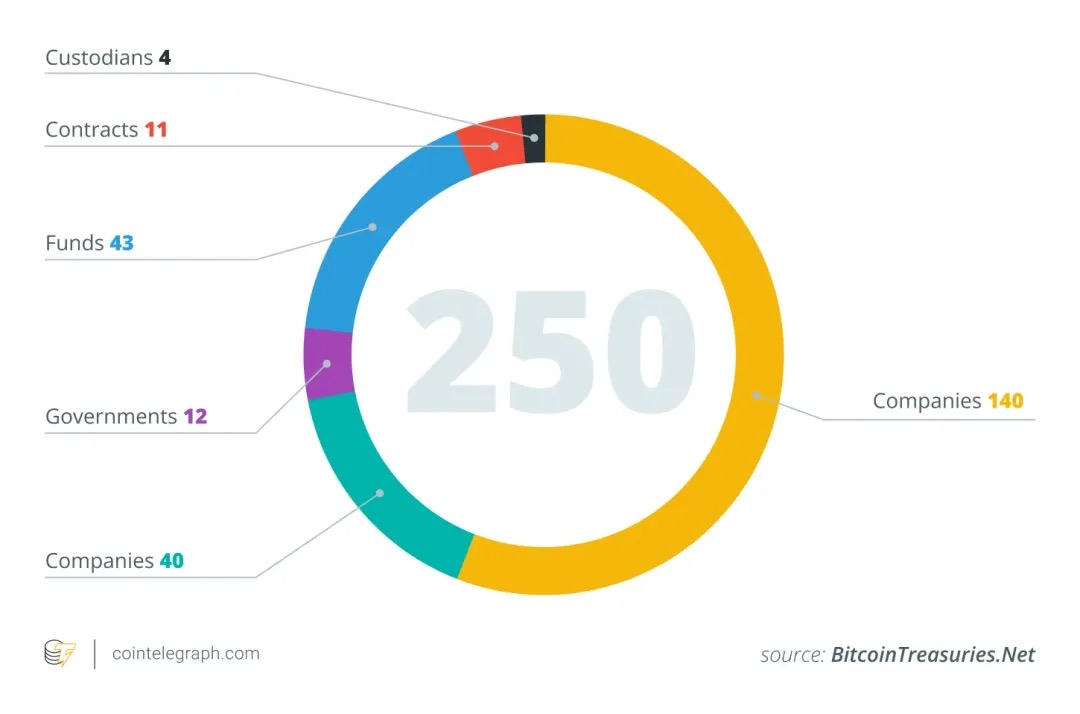
These companies span multiple industries (technology, energy, finance, education, etc.) and different countries and regions. Many companies view Bitcoin's limited supply of 21 million as a hedge against inflation and emphasize its low correlation with traditional financial assets. This strategy is quietly going mainstream: as of May 2025, 64 companies registered with the SEC hold a total of approximately 688,000 BTC, accounting for approximately 3-4% of the total supply of Bitcoin. Analysts estimate that more than 100-200 companies around the world have included crypto assets in their financial statements.
Models for Crypto Asset Reserves
When a public company allocates part of its balance sheet to cryptocurrencies, a core question arises: How do they finance the purchase of these assets? Unlike traditional financial institutions, most companies that adopt crypto treasury strategies do not rely on cash-flow-rich main businesses to support them. The following analysis will use $MSTR (MicroStrategy) as the main example, because most other companies are actually copying its model.
Operating Cash Flow
Although the most "healthy" and least dilutive way in theory is to purchase crypto assets through the free cash flow generated by the company's core business, this approach is almost impossible in reality. Most companies themselves lack sufficiently stable and large-scale cash flow to accumulate large amounts of BTC, ETH or SOL reserves without external financing.
Take MicroStrategy (MSTR) as a typical example: the company was founded in 1989 and was originally a software company focusing on business intelligence. Its main businesses include HyperIntelligence, AI analysis dashboards and other products, but these products can only generate limited revenue to date. In fact, MSTR's annual operating cash flow is negative, which is far from the tens of billions of dollars it has invested in Bitcoin. It can be seen that MicroStrategy's crypto vault strategy was not based on internal profitability from the beginning, but relied on external capital operations.
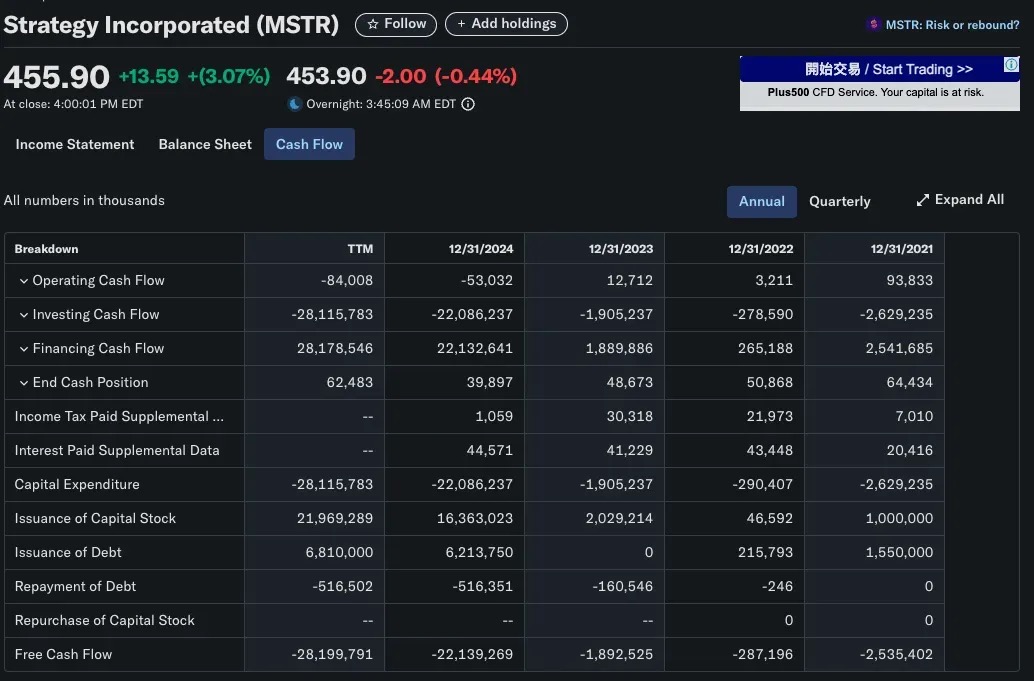
A similar situation occurred with SharpLink Gaming (SBET). The company transformed into an Ethereum treasury carrier in 2025, purchasing more than 280,706 ETH (about $840 million). Obviously, it could not have done this operation relying on the revenue from its B2B gaming business. SBET's capital formation strategy mainly relies on PIPE financing (private investment in public equity) and direct stock issuance, rather than operating income.
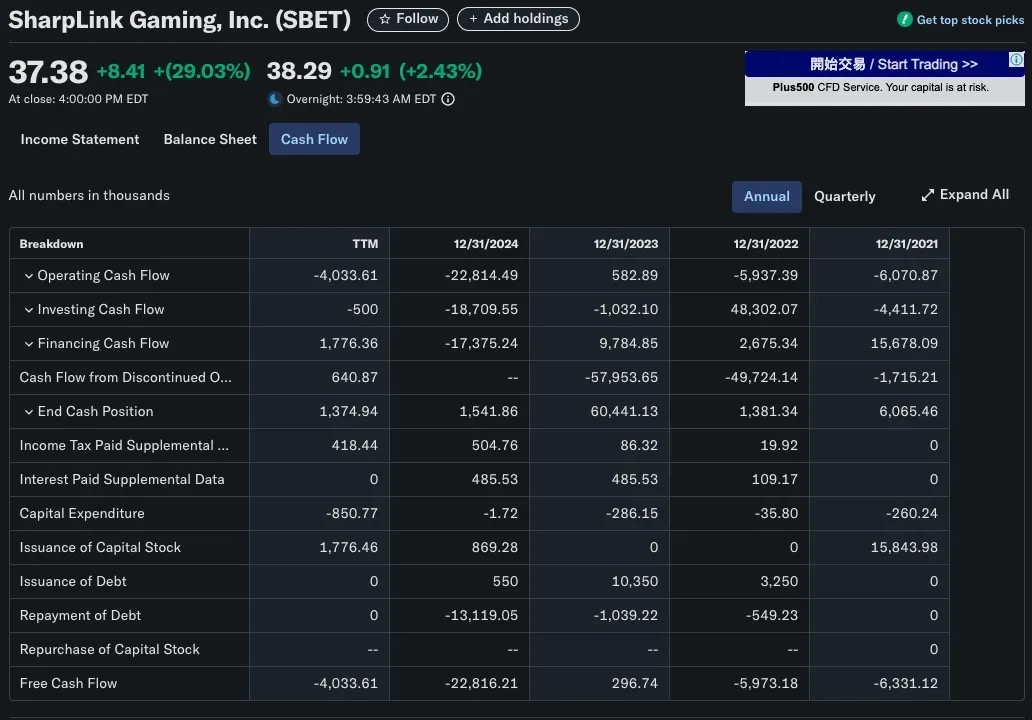
Capital Market Financing
Among listed companies that adopt crypto treasury strategies, the most common and scalable way is to raise funds through public offerings by issuing stocks or bonds and use the proceeds to purchase crypto assets such as Bitcoin. This model enables companies to build large-scale crypto treasuries without using retained earnings, and fully draws on the financial engineering methods of traditional capital markets.
Issuing Equity: A Traditional Dilutive Financing Example
In most cases, issuing new stock comes with costs. When a company raises capital by issuing additional stock, two things typically happen:
Ownership dilution: The existing shareholders' stake in the company decreases.
Earnings per share (EPS) decreases: When net profit remains unchanged, an increase in total share capital leads to a decrease in EPS.
These effects typically cause stock prices to fall for two main reasons:
Valuation logic: If the price-to-earnings ratio (P/E) remains unchanged and EPS declines, the stock price will also fall.
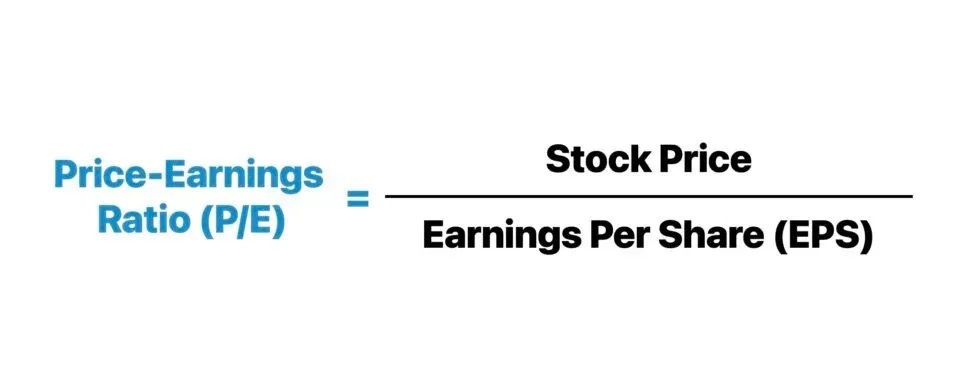
Market psychology: Investors often interpret financing as a sign that the company is short of funds or in trouble, especially when the funds raised are used for unproven growth plans. In addition, the supply pressure of a large number of new shares entering the market will also pull down market prices.
An exception: MicroStrategy’s anti-dilution equity model
MicroStrategy (MSTR) is a typical counterexample that deviates from the traditional "equity dilution = shareholder loss" narrative. Since 2020, MSTR has been actively purchasing Bitcoin through equity financing, and its total outstanding shares have increased from less than 100 million shares to more than 224 million shares by the end of 2024.

Despite the dilution, MSTR has often outperformed Bitcoin itself. Why? Because MicroStrategy has long been in a state of “market cap greater than the net value of its Bitcoin holdings”, which we call mNAV > 1.
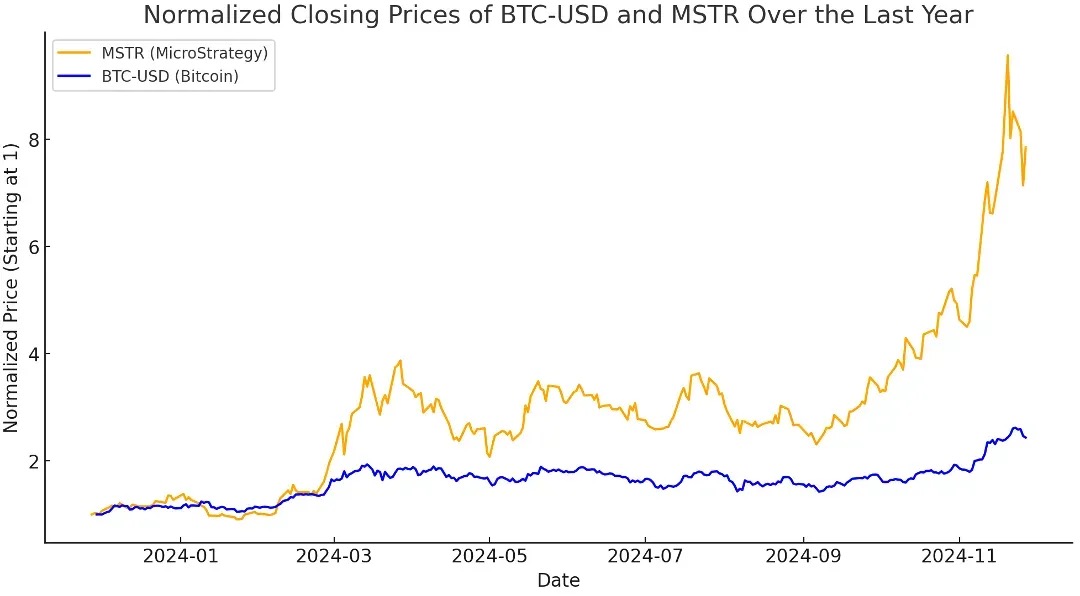 =
=
Understanding the Premium: What is mNAV?

When mNAV > 1, the market values MSTR at a higher value than the fair market value of the bitcoins it holds.
In other words, when investors gain exposure to Bitcoin through MSTR, they pay a higher price per unit than the cost of purchasing BTC directly. This premium reflects the market's confidence in Michael Saylor's capital strategy, and may also represent the market's belief that MSTR provides leveraged, actively managed BTC exposure.

Support of traditional financial logic
Although mNAV is a crypto-native valuation metric, the concept of "trading price higher than the value of the underlying assets" has long been prevalent in traditional finance.
There are several reasons why companies often trade at a premium to their book value or net assets:
Discounted Cash Flow (DCF) Valuation Method
Investors focus on the present value of a company's future cash flows, not just its current assets.
This valuation approach often results in companies trading at prices far above their book value, especially in the following situations:
Revenue and profit margin growth expectations
The company has pricing power or a technological/commercial moat
📌 Example: Microsoft's valuation is not based on its cash or hardware assets, but on its future stable subscription software cash flow.
Earnings and Revenue Multiple Valuation Method (EBITDA)
In many high-growth industries, companies are often valued using a P/E (price-to-earnings) or revenue multiple:
High-growth software companies may trade at multiples of 20–30x EBITDA;
Early-stage companies may trade at multiples of 50 times revenue or more even if they have no profits.
📌 Example: Amazon's P/E ratio in 2013 was as high as 1078 times.
Despite slim profits, investors are betting on its future dominance in e-commerce and AWS.
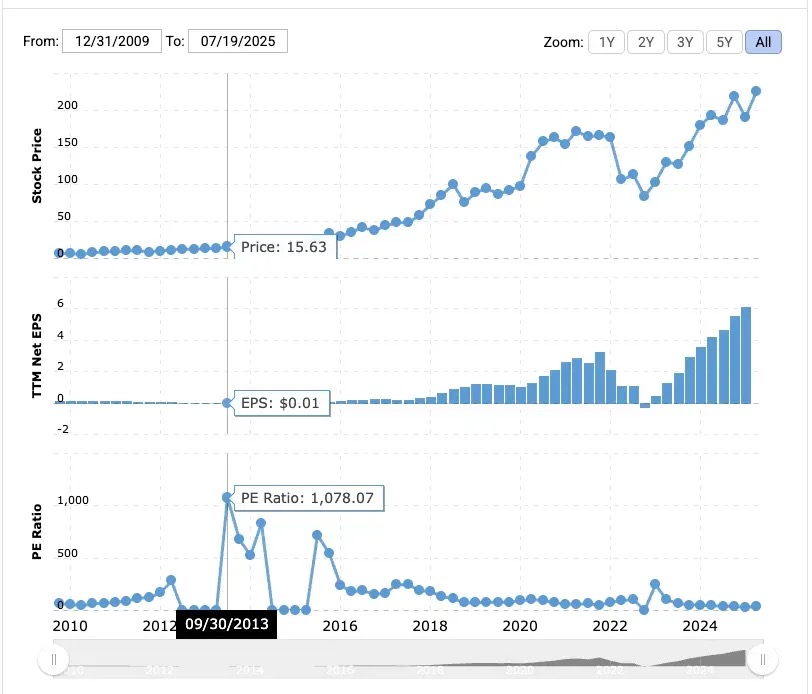
MicroStrategy has an advantage that Bitcoin itself does not: a corporate shell that can access traditional financing channels. As a US public company, it can issue stocks, bonds, and even preferred equity to raise cash, and it does so with amazing results.
Michael Saylor has cleverly exploited the system: he has raised billions of dollars through the issuance of zero-percent convertible bonds and, more recently, innovative preferred stock products, and has invested all of that money in Bitcoin.
Investors recognize that MicroStrategy is able to use "other people's money" to buy Bitcoin on a large scale, and this opportunity is not easily replicated by individual investors. MicroStrategy's premium "has nothing to do with short-term NAV arbitrage" but comes from the market's high confidence in its ability to acquire and allocate capital.
mNAV > 1 How to achieve anti-dilution
When MicroStrategy is trading above the net asset value of its Bitcoin holdings (i.e. mNAV > 1), the company can:
Issue new shares at a premium price
Use the raised funds to buy more Bitcoin (BTC)
Increase total BTC holdings
Drive NAV and Enterprise Value to Rise Simultaneously
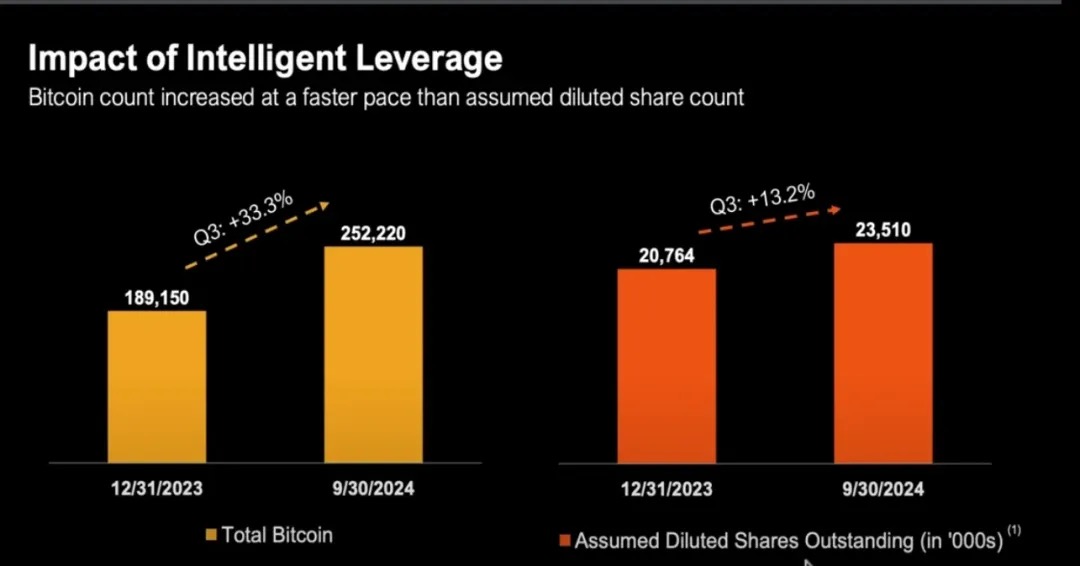
Even as the number of outstanding shares increases, BTC/share holdings may remain stable or even increase, making the issuance of new shares an anti-dilution operation.
What happens if mNAV < 1?
When mNAV < 1, it means that every dollar of MSTR stock represents a BTC market value of more than $1 (at least on paper).
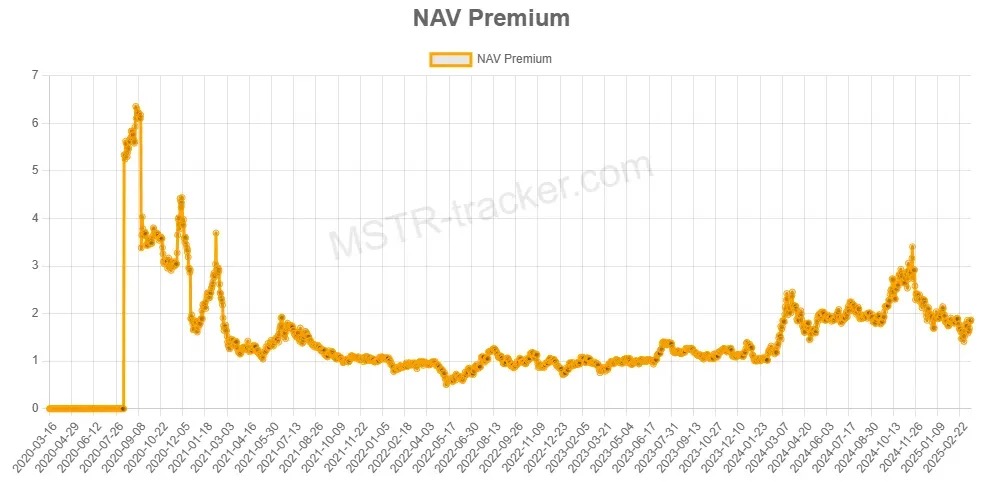
From a traditional financial perspective, MSTR is trading at a discount, below its net asset value (NAV). This creates challenges in capital allocation. If the company uses equity financing to buy BTC in this situation, from a shareholder perspective, it is actually buying BTC at a high price, thereby:
Dilution BTC/share (BTC holdings per share)
and reduce existing shareholder value
When MicroStrategy faces a situation where mNAV < 1, it will no longer be able to maintain the flywheel effect of "issuing new shares → purchasing BTC → increasing BTC/share".
So what options are there at this point?
Buy back stocks instead of continuing to buy BTC
When mNAV < 1, repurchasing MSTR stock is a value-accretive behavior for the following reasons:
You are buying back shares at a discount to their intrinsic BTC value
BTC/share will rise as the number of outstanding shares decreases
Saylor once made it clear: If mNAV is lower than 1, the best strategy is to buy back stocks rather than continue to buy BTC.
Method 1: Issuing Preferred Stock
Preferred stock is a hybrid security that sits between debt and common stock in a company's capital structure. It typically provides a fixed dividend, has no voting rights, and takes precedence over common stock in profit distributions and liquidations. Unlike debt, preferred stock does not require repayment of principal, and unlike common stock, it provides more predictable income.
MicroStrategy has issued three classes of preferred stock: STRK, STRF and STRC.
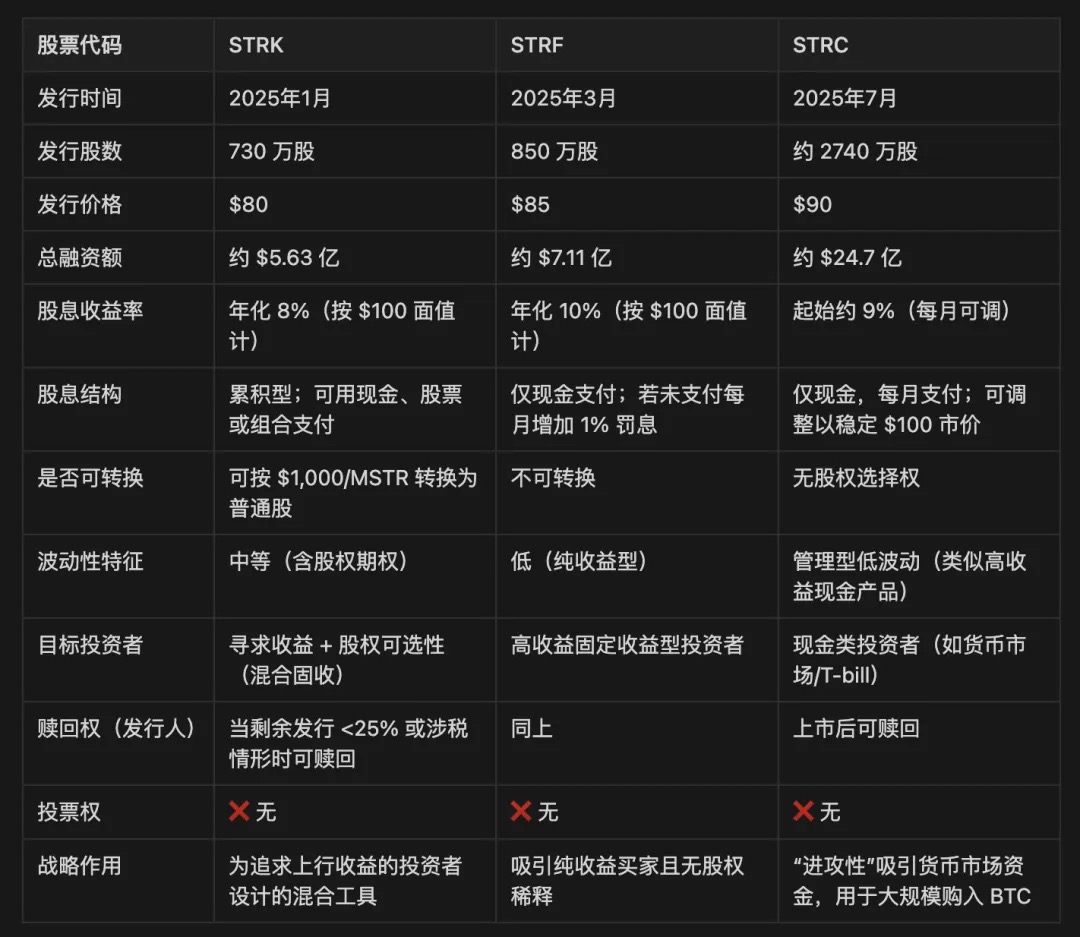
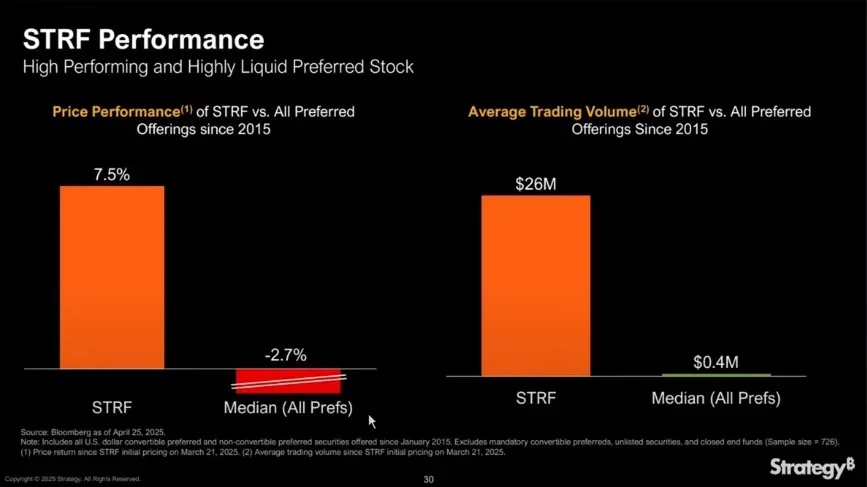
STRF is the most straightforward instrument: it is a non-convertible perpetual preferred stock that pays a fixed cash dividend of 10% per annum on a $100 par value. It has no conversion option and does not participate in MSTR's stock appreciation, only provides income.
The market price of STRF will fluctuate around the following logic:
If MicroStrategy needs to raise funds, it will issue more STRF, thereby increasing supply and lowering the price;
If the market demand for yield surges (such as during a period of low interest rates), the STRF price will increase, thereby reducing the effective yield;
This creates a self-regulating price mechanism, with prices typically ranging in a narrow range (e.g. $80–$100), driven by yield demands and supply and demand.
Example: If the market demands a 15% yield, the STRF price may drop to $66.67; if the market accepts 5%, it may rise to $200.
Because STRF is a non-convertible, largely non-redeemable instrument (unless tax or capital triggers are encountered), it behaves like a perpetual bond and MicroStrategy can use it repeatedly to "buy the dips" BTC without having to refinance.
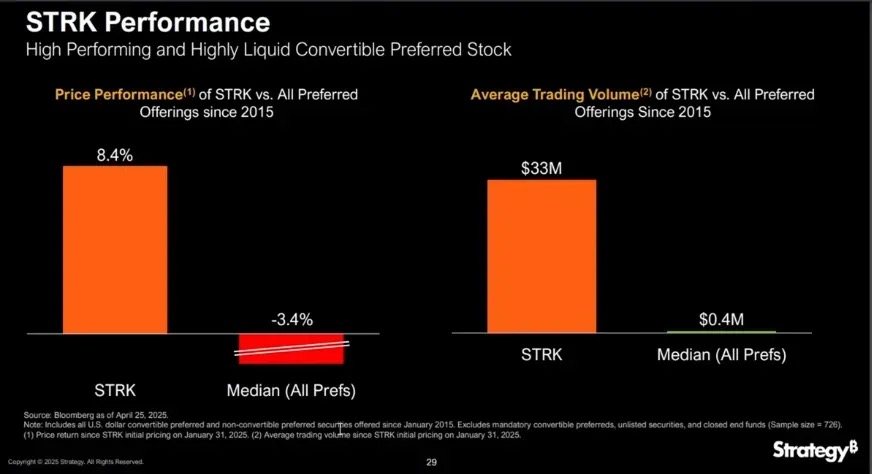
STRK is similar to STRF, with an annualized dividend of 8%, but with an added key feature: when the MSTR stock price exceeds $1,000, it can be converted into common stock at a ratio of 10:1, which is equivalent to embedding a deeply out-of-the-money call option, providing holders with long-term growth opportunities.
STRK is very attractive to both companies and investors for the following reasons:
Asymmetric upside opportunities for MSTR shareholders:
Each STRK share is priced at about $85, so 10 shares can raise $850;
If converted into 1 share of MSTR in the future, it means that the company currently buys BTC at a cost of $850, but dilution will only occur if the MSTR share price rises above $1,000;
Therefore, it is non-dilutive during the period when MSTR < $1,000, even after conversion it reflects the appreciation from prior BTC accumulation.
Income self-stabilizing structure:
STRK pays a dividend of $2 per quarter, which is $8 per year;
If the price falls to $50, the yield will rise to 16%, attracting buying to support the price;
This structure makes STRK behave like a "bond with options": defensive on the downside, engaging on the upside.
Investor Motivations and Switching Incentives:
When MSTR stock price exceeds $1,000, holders will have an incentive to convert to common stock;
As MSTR rises further (e.g. to $5,000 or $10,000), STRK's dividend becomes negligible (yield is only about 0.8%), accelerating the conversion;
Ultimately, a natural exit channel will be formed, transforming temporary financing into a long-term shareholder structure.
MicroStrategy also reserves the right to redeem STRK if, for example, the number of shares remaining unconverted falls below 25% or special triggering circumstances, such as tax, occur.
In the order of liquidation, STRF and STRK rank above common stock but below debt.
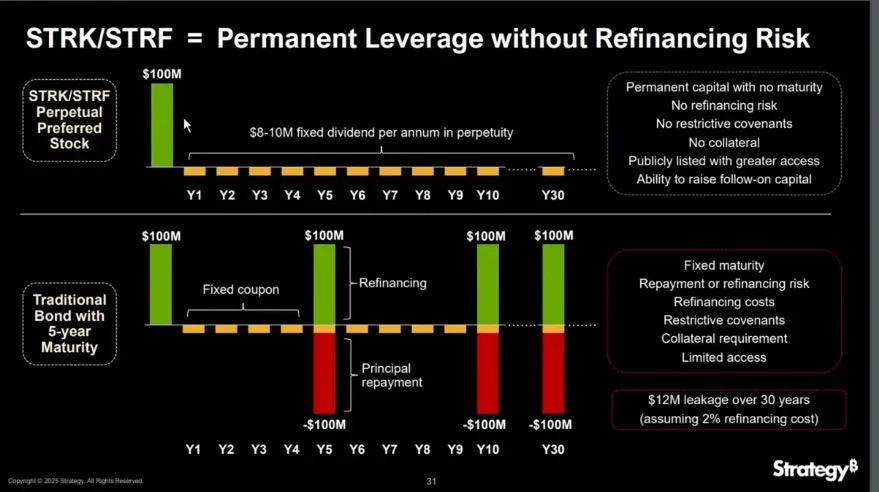
These tools are particularly important when the company is in a situation where mNAV < 1. This is because issuing common stock at a discount will dilute BTC/share, thereby reducing value. Preferred stocks like STRF and STRK allow the company to continue raising funds without diluting common stock, whether it is used to continue buying Bitcoin or repurchasing shares, it can maintain the stability of BTC/share while expanding assets.
How do they pay interest (dividends)?
As of YTD 2025, MicroStrategy has raised $6.6 billion through ATM (At-The-Market) stock issuance, far covering its annual fixed interest and dividend costs of $185 million.
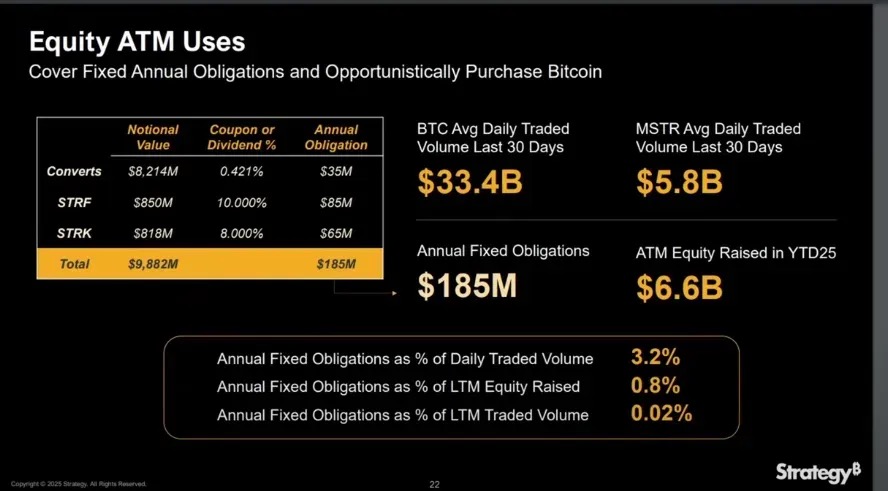
When mNAV > 1, paying preferred stock dividends through equity issuance does not dilute BTC per share because the incremental BTC brought by the raised funds exceeds the unit dilution.
In addition, preferred shares are not counted as debt, allowing MicroStrategy to continue to expand its balance sheet without worsening its net debt ratio, which is critical to maintaining market confidence in its capital structure.
When mNAV > 1
Convertible Bond
Convertible bonds are corporate debt instruments that give creditors the right (but not the obligation) to convert bonds into shares of the issuing company at a predetermined price (called the conversion price) in the future, so it is essentially a bond + call option structure. This tool is often used in situations where mNAV > 1 because it is particularly suitable for accumulating Bitcoin.
Take MicroStrategy's 0% convertible bonds as an example:
No interest is paid during the life of the bond;
Only the principal is repaid at maturity (unless the investor chooses to convert to shares);
For MSTR, this is an extremely capital-efficient financing method: it can raise billions of dollars to purchase Bitcoin without any immediate dilution or interest burden. The only risk is that the principal will have to be repaid in the future if the stock price performs poorly.
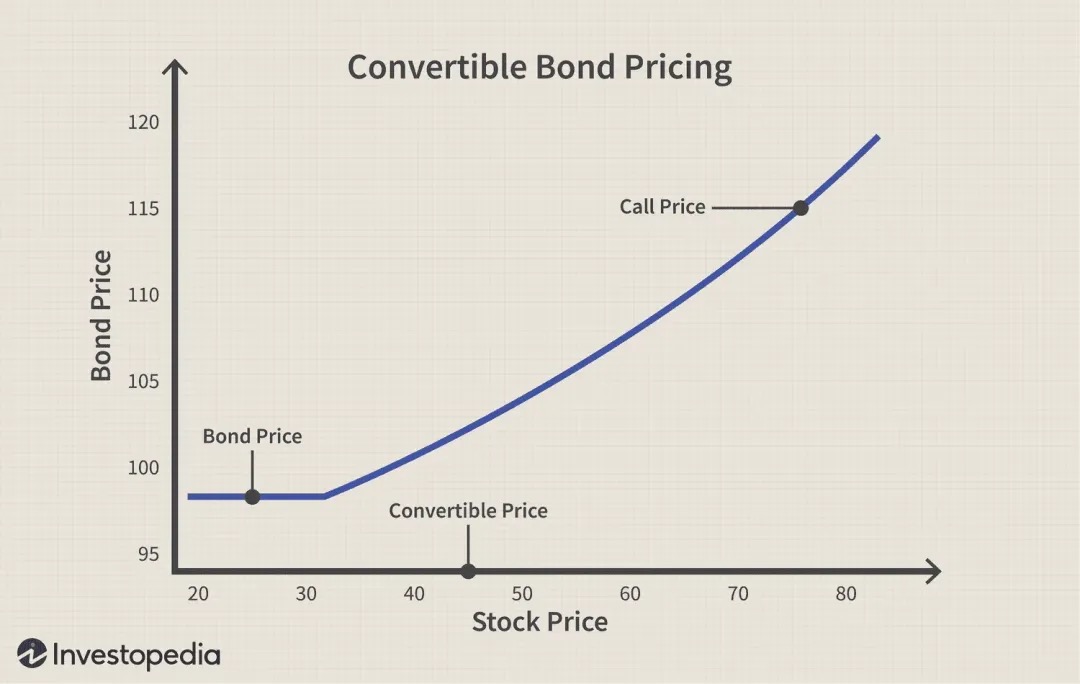
Case 1: Stock price rises beyond expectations
MicroStrategy issues convertible bonds to investors;
The company immediately received $3 billion in funding to purchase Bitcoin;
Since the bonds carry a 0% interest rate, MicroStrategy does not have to pay interest during the life of the bonds;
If the MSTR stock price rises above the conversion price threshold;
Investors choose to convert bonds into stocks, or to recover their principal;
Instead of paying cash principal, MicroStrategy will deliver it through the issuance of new shares.
Case 2: The stock price falls but does not reach the conversion price
MicroStrategy issues convertible bonds to raise funds to purchase Bitcoin;
The bonds have a 0% interest rate, and the company does not need to pay interest during the term;
MSTR stock price continues to trade below the conversion price;
Investors will not exercise the conversion option because the conversion will result in a loss;
When the bonds mature, the company needs to repay the entire principal in cash;
If cash reserves are insufficient, MicroStrategy may need to raise funds again to repay debt.

It is worth emphasizing that convertible bonds are essentially a combination of "ordinary bonds + call options", which is especially typical in the case of MicroStrategy (MSTR). The company continues to issue convertible bonds with an annual interest rate of 0%, which means that investors have no interest income at all during the bond period.
Why would savvy institutional investors be willing to accept such a “low attractiveness” structure? The answer lies in the embedded call option value: This embedded call option is particularly valuable when the market expects higher implied volatility for MSTR, because the greater the expected price volatility, the higher the option value to capture upside opportunities.
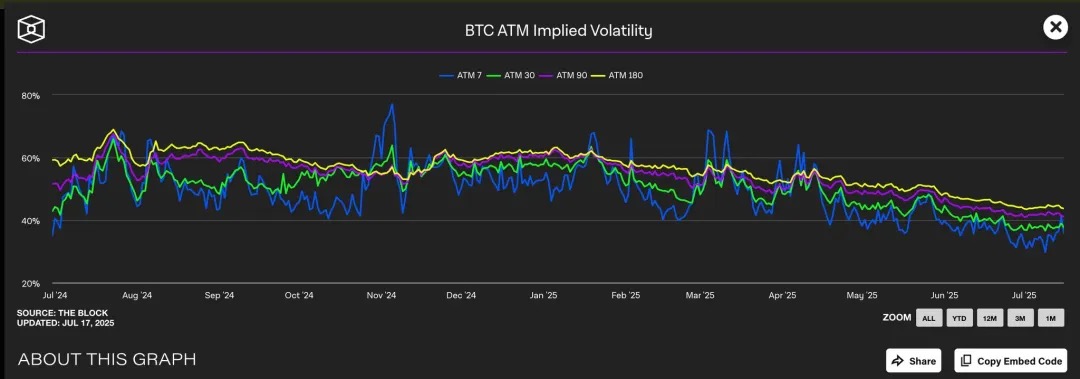
We observe that Bitcoin’s implied volatility (IV) is usually between 40% and 60% at different maturities. As MicroStrategy’s stock price is highly correlated with Bitcoin, this higher BTC IV indirectly raises the valuation of MSTR stock options.
Currently, at-the-money call options (strike price of about $455) are trading at an IV level of 45%, while the corresponding put option IV is higher, indicating that the market has strong expectations for future volatility. Such a high volatility environment significantly increases the value of the embedded call option in the MSTR convertible bond.
In essence, MicroStrategy is actually "selling" this call option to investors at a high premium. Because the greater the price volatility of the underlying asset, the higher the probability that the option will be "in the money" when it expires, which makes the call option more expensive during periods of high volatility.
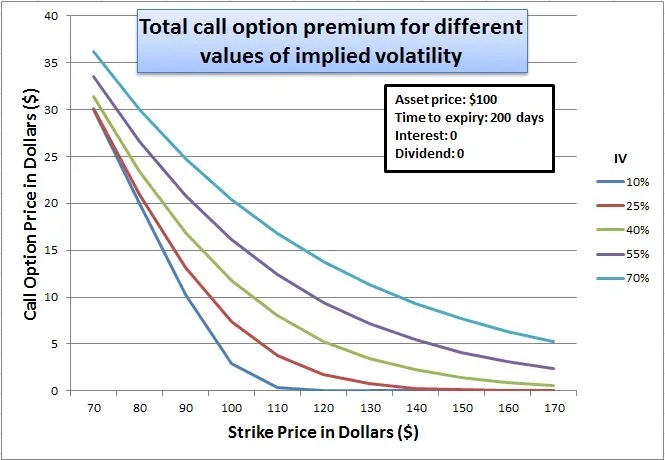
From the investors’ perspective, this is acceptable because they are effectively buying a leveraged volatility bet: if MSTR’s stock price rises sharply, they can convert to stocks and earn huge returns; if the stock price does not rise, bondholders can still get their principal back at maturity.
For MSTR, this is a win-win: on the one hand, it can raise funds without paying interest and diluting equity immediately; on the other hand, if the Bitcoin strategy is successful, it can service or refinance this debt simply through stock price appreciation. In this framework, MSTR is not just raising debt, but "monetizing volatility" and exchanging future expectations of appreciation for cheap money today.
Gamma Trading
Gamma Trading is a core mechanism for the sustainability of MicroStrategy's capital structure, especially in the context of its repeated issuance of convertible bonds. The company has issued billions of dollars of zero-coupon convertible bonds, and its main attraction is not the traditional fixed income, but the call option value embedded in the bond. In other words, investors are not concerned about the interest income of the bond itself, but the trading and volatility arbitrage space of the option component.
The buyers of these bonds are not traditional long-term creditors, but hedge funds that adopt a market-neutral strategy. Such institutions are widely engaged in so-called Gamma Trading, whose investment logic is not "buy and hold", but relies on constant hedging and adjustment of positions to capture profits in fluctuations.
Gamma Trading Mechanism in MSTR:
Basic transaction structure:
Hedge funds buy MicroStrategy’s convertible bonds (essentially bonds + call options);
At the same time, short a corresponding amount of MSTR stock to maintain delta-neutral.
Why was it established?
If MSTR stock rises, the call option on the bond will increase in value faster than the loss from the short stock;
If the stock price falls, the short position gains faster than the bond loses;
This symmetrical payoff structure allows hedge funds to profit from volatility rather than directional changes.
Gamma and rebalancing mechanism:
As stock prices fluctuate, hedge funds need to dynamically adjust their short positions to maintain Delta neutrality;
The initial hedge is set according to the bond’s Delta value. For example, if a convertible bond has a Delta of 0.5, the fund short MSTR stock worth $50 to hedge the $100 bond;
However, when the stock price continues to fluctuate, the Delta of the convertible bond itself will also change (i.e. the manifestation of Gamma), and the fund needs to continue to dynamically rebalance:
Stock price rises, Delta increases (bonds behave more like stocks) → add short position;
Stock price falls, Delta decreases (bond behaves more like a bond) → Cover short position;
This kind of hedging transaction of constantly "selling high and buying low" is called Gamma Trading.
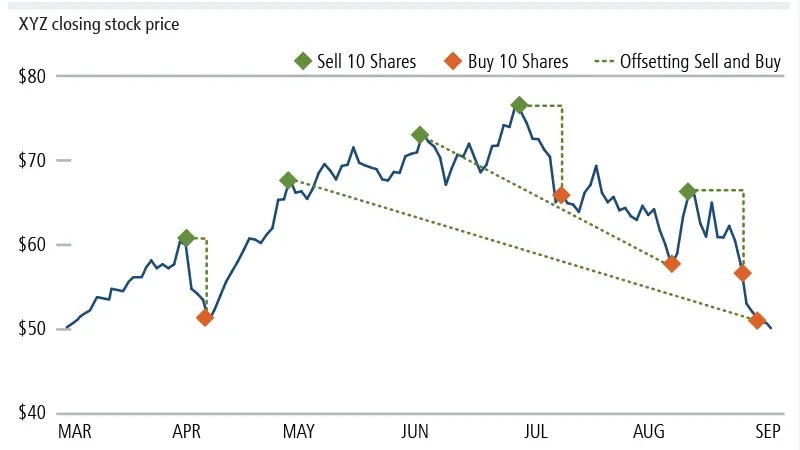
In reality, the bond delta changes nonlinearly with the stock price, and you need to constantly adjust your short position to maintain neutrality.
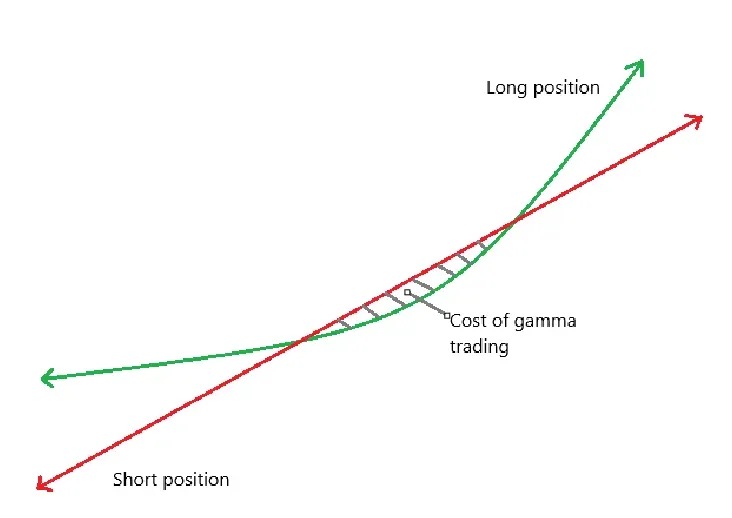
Green curve: Returns from holding convertible bonds;
Red straight line: returns on short stocks;
The difference between the two is the net income P&L;
When the stock is sideways and near the conversion range, frequent hedging operations may lead to losses. This is called the "cost zone" of Gamma Trading (the shaded part in the figure).
Impact on MSTR premium:
These Gamma Hedgers Are Not Long-Term Holders
When MSTR stock reaches the convertible bond conversion price, Delta → 1, and Gamma drops to an extremely low level;
If volatility declines or spreads narrow, causing gamma trades to lose money, these funds will exit the market, weakening demand for convertible bonds.
Second-Order Effects:
MicroStrategy's convertible bonds usually have zero coupons but long duration → low Theta (time value decay);
When volatility is too low, Gamma trading is no longer profitable, Gamma PnL ≪ Theta loss (time loss);
The sale of convertible bonds will become difficult, affecting its financing capabilities.
The comparison of Short Float illustrates the dominance of this strategy:
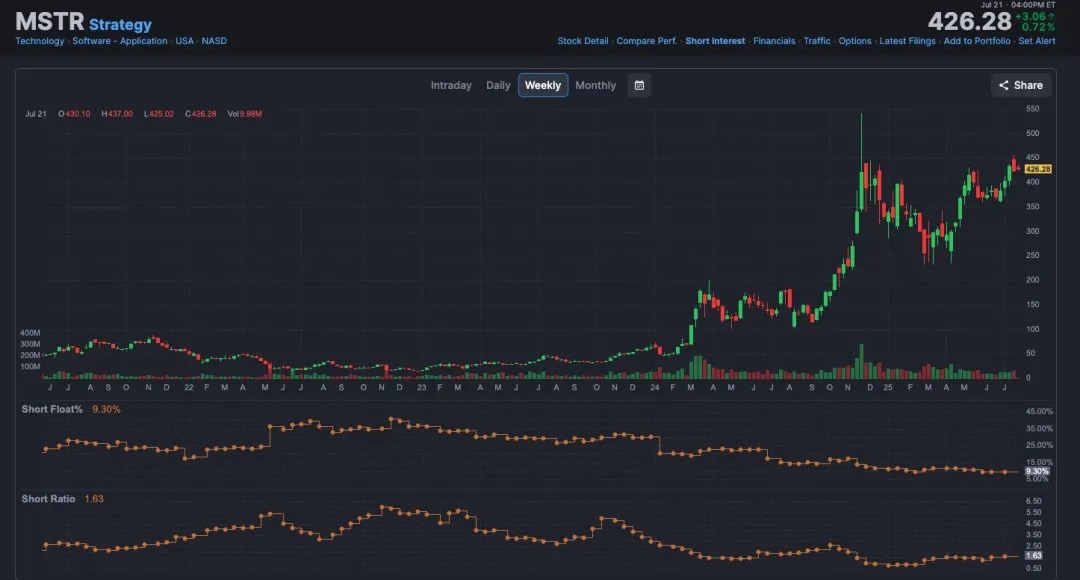

Short float refers to the proportion of a company's total outstanding shares that are short. We observed that MicroStrategy's short float was high due to its large convertible bond issuance, because funds that perform gamma trading often need to short MSTR stocks for delta neutral hedging.
In contrast, SBET did not issue convertible bonds, but relied on PIPE private placement financing and ATM market price issuance mechanism, lacking the structural arbitrage opportunities of convertible bonds + options, so the short float is significantly lower. SBET's financing structure is also closer to traditional financing, and cannot attract large-scale arbitrage institutions to participate.
Performance
I tracked and analyzed the stock price reactions of 12 public companies after they announced cryptocurrency asset allocations in 2025. Our dataset contains stock price data around the announcement date, candlestick chart visualizations, and key performance indicators.
The stock price reaction following the first crypto vault announcements in 2025 was, on average, explosive, short-term, but still resulted in positive cumulative returns.

Among the 12 listed companies, the average 1-day return was +103.17%, showing a strong immediate reaction from investors. The 5-day return further soared to +285.92%, before falling back on the 10th day and finally stabilizing at +102.03%. While some companies had flat or even negative performance, several of them saw extreme share price surges.
Example 1: BitMine Immersion Technologies Inc. (NYSE-American: BMNR)
This is a blockchain infrastructure company headquartered in Las Vegas that operates industrial-grade Bitcoin mining farms, sells immersion cooling hardware, and provides hosting services for third-party equipment in areas with low electricity prices such as Texas and Trinidad. On June 30, 2025, the company issued 55.6 million shares through private placement at a price of $4.5 per share, raising a total of approximately $250 million to expand its Ethereum treasury.
Following the announcement, BMNR stock surged from $4.27 to a high of $161, a 3-day gain of +3,674.9%. This epic surge was likely driven by thin float, retail investor enthusiasm, and FOMO momentum. Despite the subsequent sharp correction, the two-week cumulative gain was still +882.4%. This event highlights the market's positive feedback on the "MicroStrategy-style" high-conviction crypto vault strategy.
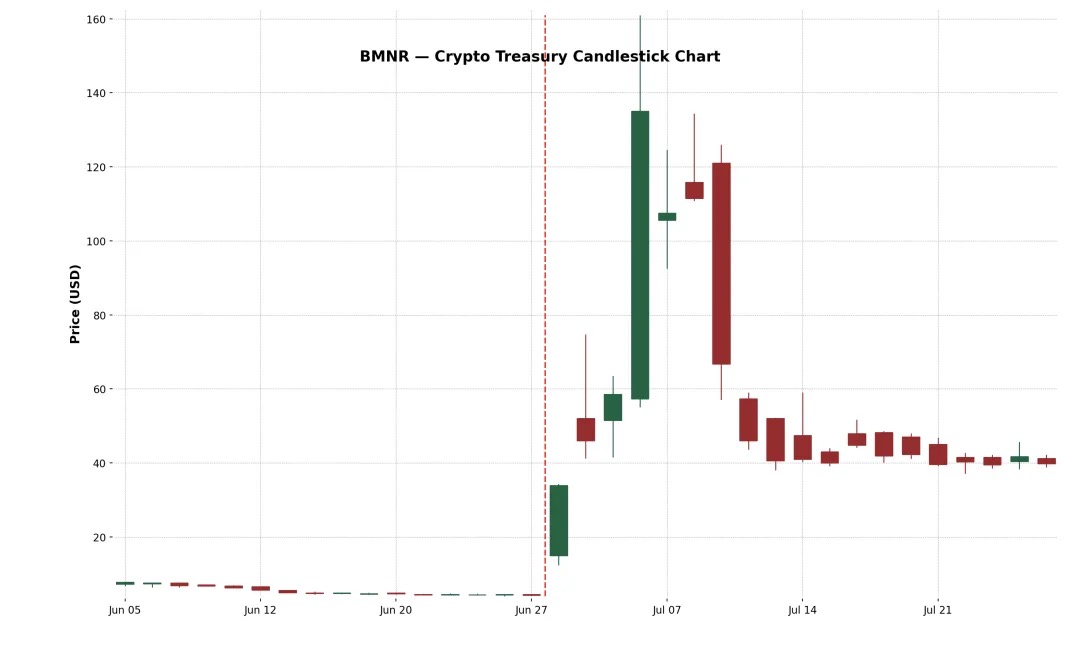
Example 2: SharkLink Gaming Ltd. (Nasdaq: SBET)
Founded in 2019, SharpLink is an online technology company focused on converting sports fans into bettors. Its platform pushes sports betting and interactive gaming offers to users based on timeliness. The company began accumulating ETH on its balance sheet in 2025, raising funds through PIPE (private placement financing) and ATM (at-market additional issuance).
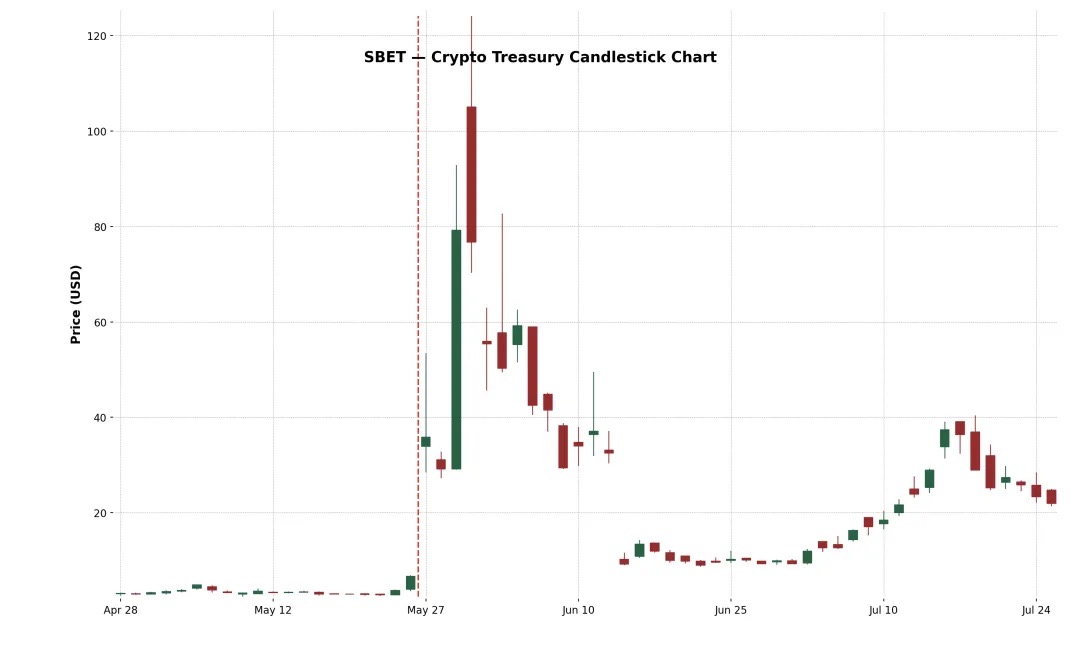
The initial reaction of the stock was extremely strong: SBET rose +433.2% on the first day and reached a high of +1,747% on the 4th trading day. The surge was driven by the scale of crypto asset allocation and the support of the big players behind the transaction. Retail investors, crypto funds and speculative traders rushed in, pushing the stock price to over $120.
However, the rally was short-lived. On June 17, SharpLink filed an S-3 registration statement with the SEC, making it possible for PIPE investors to resell their shares, sparking widespread confusion. Many people mistakenly believed that major shareholders were selling. Although Consensys co-founder and SBET chairman Joseph Lubin later clarified that "no shares have been sold yet," it was too late: SBET shares plummeted nearly 70%, almost wiping out most of the gains after the announcement.
Despite the sharp pullback, SBET's cumulative gain is still +227.2%, indicating that the market still gives significant long-term value to its ETH treasury strategy. After retreating from the highs, the stock began to regain financial support in the following weeks, indicating that the market's confidence in the "Ethereum as a reserve asset" model is recovering.
Example 3: Bit Digital Inc. (Nasdaq: BTBT)
BTBT is a New York-based digital asset platform founded in 2015 that initially operated Bitcoin mines in the United States, Canada, and Iceland.
In June 2025, the company completed an underwritten additional offering, raising approximately US$172 million, and reallocated capital to ETH through the additional income from the sale of 280 BTC, purchasing a total of approximately 100,603 ETH, officially completing the transition to the Ethereum staking and vault model, with crypto veteran Sam Tabar serving as CEO.
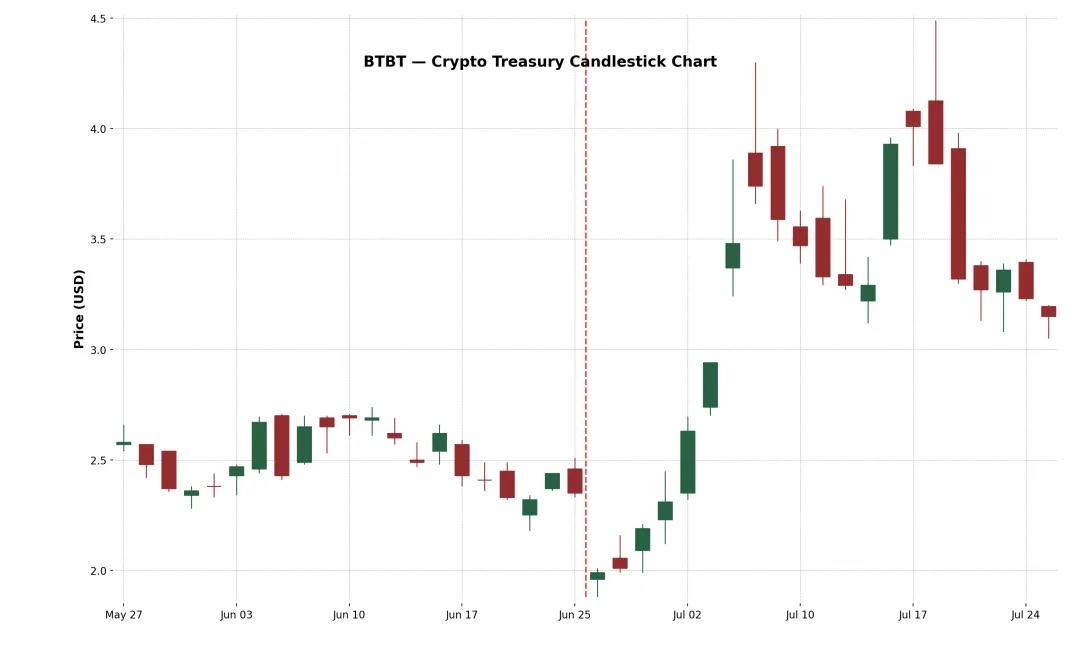
The initial market reaction was weak (–15% drop on the first day), but the stock price gradually rose over the next two weeks, ultimately reaching a gain of +91%. This mild reaction may reflect the market's familiarity with BTBT's background in crypto mining. However, the cumulative return of +34% still shows that even for established crypto companies, further expanding their crypto asset allocation can still gain positive market recognition.
Example 4: GameStop Corp. (Nasdaq: GME)
However, GameStop (GME) announced its first purchase of Bitcoin in May 2025, and plans to further transform into a consumer-grade gaming infrastructure company related to cryptocurrency. Despite the high attention of retail investors and the huge symbolic significance of this cultural meme stock's entry into crypto assets, GME's returns were negative on the 5th and 10th days after the announcement. This performance difference reveals a core insight: crypto-positive news alone is not enough to continuously push up stock prices.
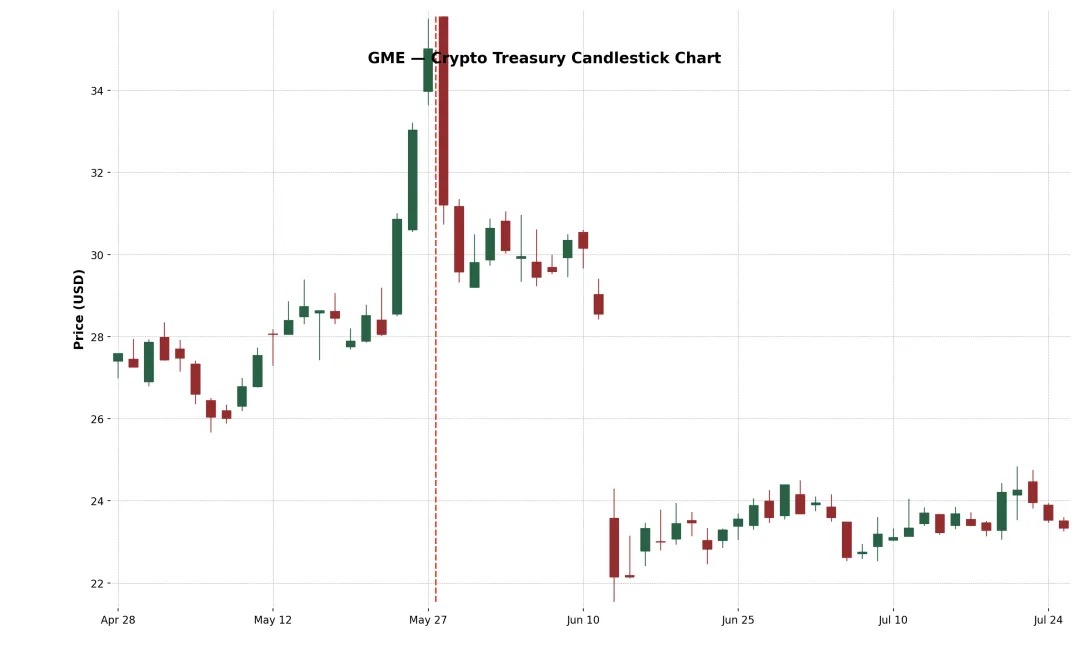
GameStop's Bitcoin layout has been questioned by the market because its retail business continues to shrink. This transformation comes after the company's multiple strategic shifts (such as stores, NFTs, metaverse, etc.).
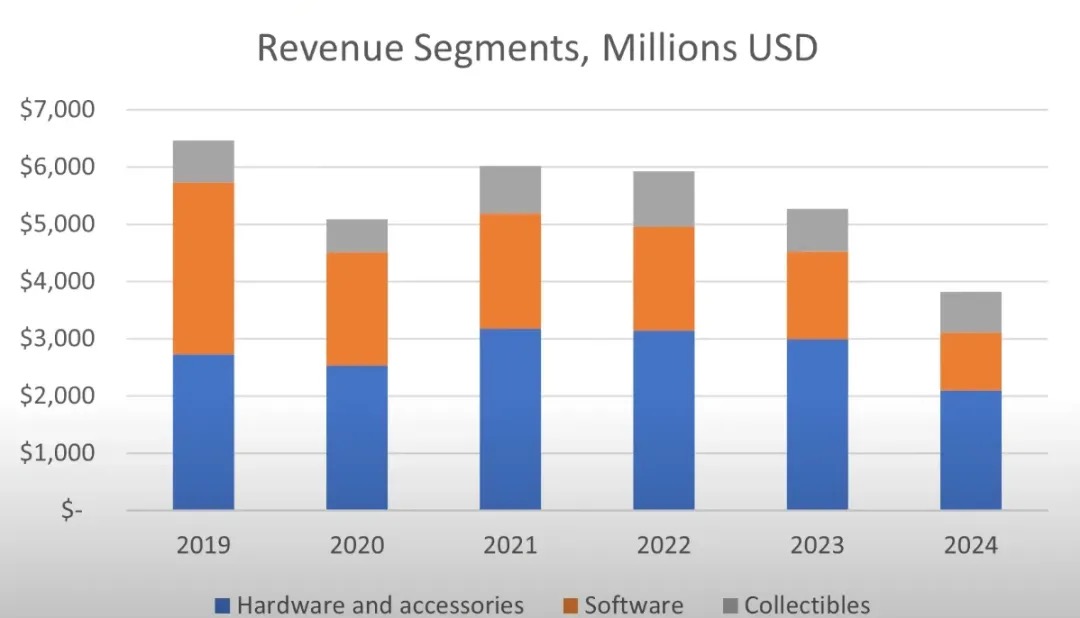
Its failure to maintain its upward trend reflects the market's doubts about its fundamentals and strategic uncertainty. The company's core revenue is still declining, and management has not proposed any substantive reform plan other than "buying Bitcoin". The message conveyed is also confusing. From stores, NFTs, the metaverse to today's cryptocurrencies, the strategy is wavering, which has seriously undermined market confidence.
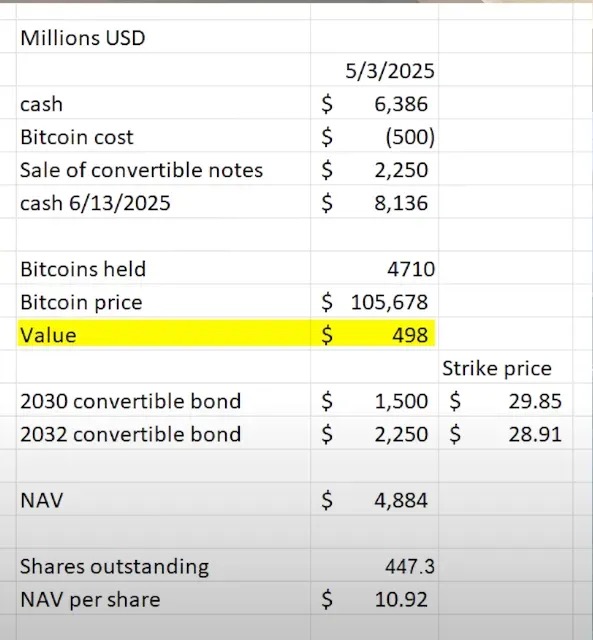
Cryptocurrency asset allocation trends
In addition to Bitcoin, more and more companies are beginning to use Ethereum (ETH) as the main asset for their cryptocurrency reserves. There are many reasons for this. First, Ethereum is widely regarded as the underlying infrastructure of the real-world asset (RWA) tokenization platform. Protocols including Ondo, Backed Finance, and Centrifuge all build institutional-grade financial products on the Ethereum settlement layer. This makes ETH a strategic reserve asset for companies betting on the trend of "traditional finance on the chain".
Secondly, unlike Bitcoin, Ethereum is a staking-based, DeFi-composable asset, and holders can earn an annualized return of about 3-4% by participating in network security. This makes ETH a programmable, interest-bearing fund, which is very attractive to CFOs seeking to optimize returns on idle cash.
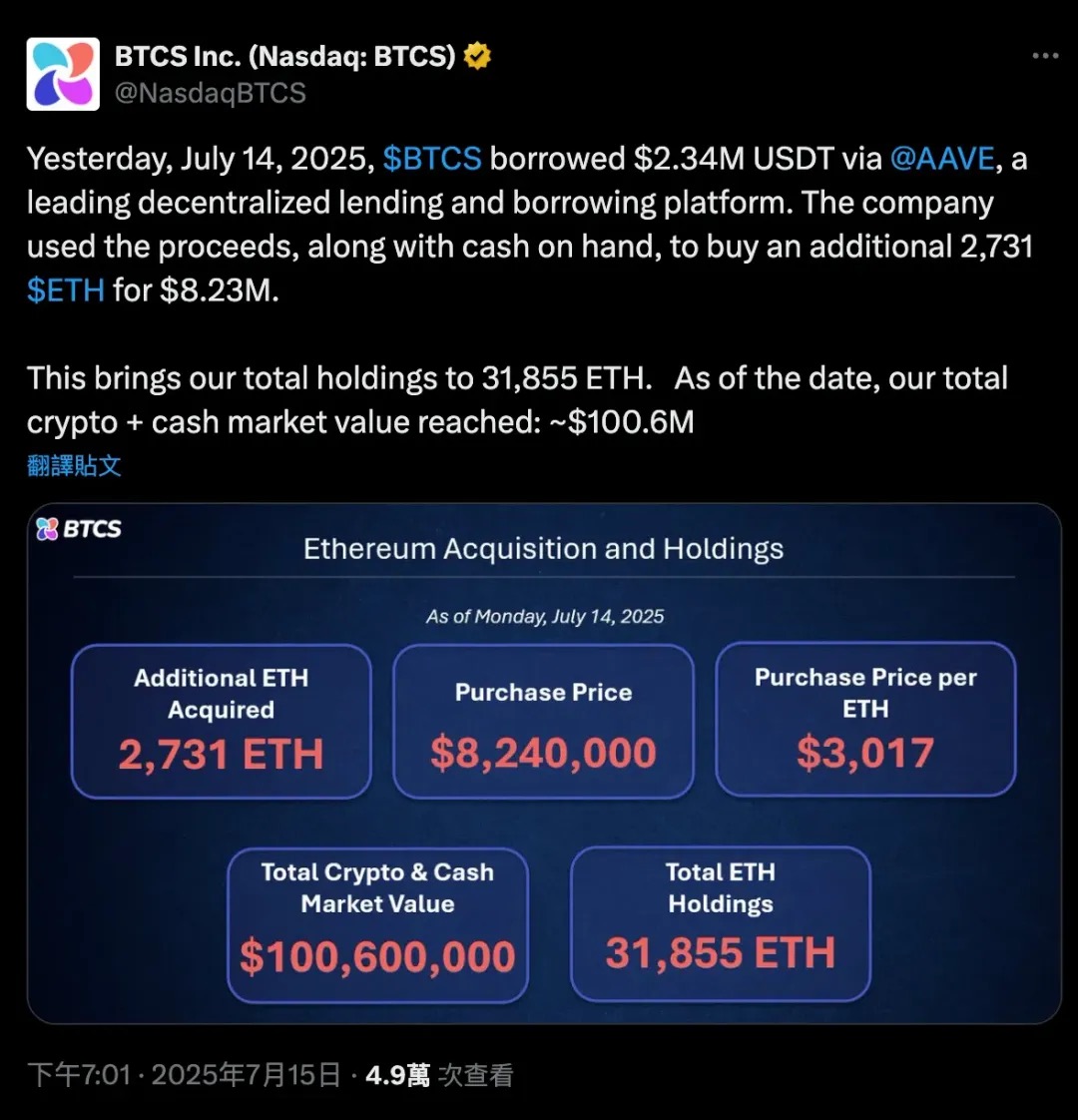
On July 14, 2025, BTCS borrowed 2.34 million USDT through Aave (a decentralized lending protocol), and with some of its own cash, it purchased a total of 2,731 ETH, worth approximately $8.24 million, further expanding its Ethereum holdings. This leveraged transaction brought BTCS's total ETH holdings to 31,855, and the company's overall crypto + cash market value to $100.6 million.
This case clearly demonstrates Ethereum’s unique dual role as both collateral and capital in DeFi. Bitcoin is more of a passive asset in a “cold wallet” style, or needs to be wrapped to participate in DeFi; while ETH is a native composable asset that companies can use for lending, staking, or participating in yield agreements without selling assets.
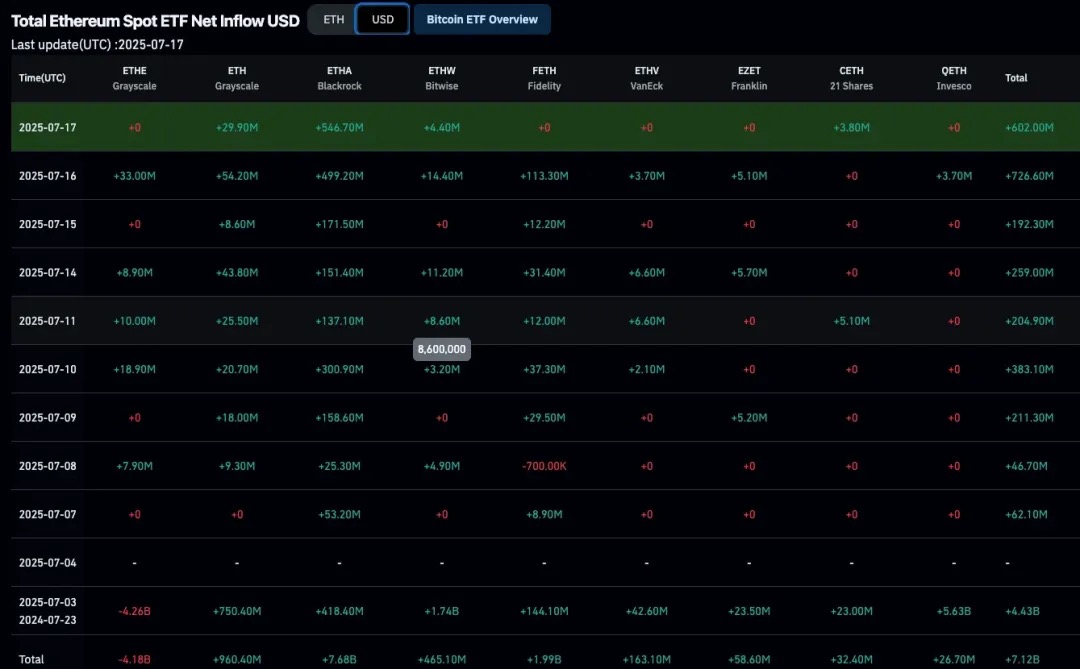
The launch of the Ethereum spot ETF has further enhanced the confidence and liquidity of institutions in ETH, and the net subscription inflow shows that the mainstream financial market is gradually accepting ETH. Therefore, SharpLink (SBET), Bit Digital (BTBT) and even some non-listed companies are also adjusting their balance sheets and increasing their ETH holdings. This is not only a speculative bet, but also an expression of a long-term belief that "Ethereum is the underlying infrastructure of the decentralized capital market."
This trend marks a major shift in the asset allocation strategy of crypto companies: from “Bitcoin = digital gold” to “Ethereum = digital financial infrastructure”.
Here are a few examples of this diverse configuration:
XRP as a reserve asset: VivoPower International (NASDAQ: VVPR) raised $121 million in May 2025, led by a Saudi prince, becoming the first public company to adopt an XRP reserve strategy. Soon after, Singapore's Trident Digital Holdings (TDTH) announced plans to issue up to $500 million in shares to establish XRP reserves; China's Webus International (WETO) also submitted an application to invest $300 million in XRP holdings and plans to integrate Ripple's cross-border payment network into its business system. These moves were affected by Ripple's legal compliance status in the United States, and the market reaction was mixed. Although XRP rose in mid-2025, the performance of related stocks was differentiated, but these actions showed that crypto asset allocation is moving beyond the traditional dual main lines of BTC and ETH.
Litecoin (LTC) Reserve: MEI Pharma (MEIP) is a small biopharmaceutical company that unexpectedly announced its transformation in July 2025. Through the participation of Litecoin founder Charlie Lee and the Litecoin Foundation, it raised $100 million to create the first institutional-level LTC reserve program. This plan was accompanied by a change in management (Lee joined the board of directors), and the market viewed it as an attempt to use crypto capital to inject new momentum into the troubled biopharmaceutical industry. The stock price soared after the release of the "biopharmaceutical + Litecoin" news, but the stock price fluctuated sharply due to investors' doubts about its ultimate business model.
HYPE Token Reserve: A more "outlier" case comes from Sonnet BioTherapeutics (SONN), which announced an $888 million reverse merger in July 2025 to form Hyperliquid Strategies Inc., with plans to include $583 million in HYPE tokens on the company's balance sheet. The deal is backed by mainstream crypto venture capital firms such as Paradigm and Pantera, and aims to create the world's largest listed entity holding HYPE tokens. SONN's stock price soared after the announcement (because HYPE is a popular token), but analysts pointed out that its structure is complex and the token itself is still in its early stages. Similarly, Lion Group (LGHL) has also received a $600 million line of credit to reserve tokens such as HYPE, Solana, and Sui to create a multi-asset crypto vault.
When will Saylor sell coins?
Michael Saylor has publicly declared that MicroStrategy will "HODL" its Bitcoin assets "forever", that is, the company has no intention of selling its BTC reserves. In fact, MicroStrategy has even revised its corporate policy to officially establish Bitcoin as its main treasury reserve asset, which means that this is an extremely long-term holding plan. However, in the real world of corporate finance, "never sell" is not absolute. In certain scenarios, MicroStrategy may be forced to sell some Bitcoin. Understanding these potential scenarios is critical because they constitute risk factors in the entire "MicroStrategy as a Bitcoin proxy asset" investment logic.
Here are some scenarios that could challenge MicroStrategy’s resolve and “force” it to sell BTC:
Significant debt maturities in tight credit markets: MicroStrategy currently has multiple debts outstanding, including convertible bonds due in 2028 and 2030 (it has previously redeemed the 2025 and 2027 bonds with equity), and possibly other loans. Typically, companies pay off old debt by refinancing - issuing new debt or new equity. In early 2025, MicroStrategy successfully redeemed its 2027 convertible bonds with equity, avoiding cash outlays. But imagine a scenario: In 2028, Bitcoin is in a deep bear market, MicroStrategy's stock price has plummeted, and interest rates are high (new financing is too expensive). At this time, if $500 million to $1 billion of debt matures, the company may face a cash flow crisis.
In this case, the traditional capital market may "close" its doors, especially when the implied volatility (IV) is too low, resulting in no investors willing to buy convertible bonds with embedded option value, and MicroStrategy's best financing tool will become ineffective.
Faced with such a credit crunch, the company will likely have to sell some of its BTC to pay off its debts, like a "forced liquidation." Although MicroStrategy owns a huge amount of BTC (worth over $70 billion by 2025), once it is used, market confidence is bound to be shaken. This sale is likely to be a last resort and will only be carried out when all other financing avenues have failed.
High interest burden or preferred stock dividend pressure: Although MicroStrategy's financing structure is flexible, it is not without cost. In 2025, the company faces fixed expenses including:
STRK Annual interest rate 8% (payable in cash or stock)
STRF annual interest rate 10% (must be paid in cash, there is a penalty for default)
STRC monthly interest rate 9–10% (payable in cash, adjustable by the Board of Directors)
Convertible bond interest (e.g. coupon rate in 2030 is 0.625%)
The total annual fixed liability exceeds US$180 million and may continue to rise with subsequent financing.
If MSTR's stock price is depressed, direct equity financing will cause severe dilution.
If we enter a Crypto Winter, MicroStrategy may continue to burn money to maintain cash dividends from STRF and STRC. If BTC is in a long-term slump, the company's leverage structure becomes dangerous. The board of directors may decide to sell some Bitcoin to "buy time" and provide cash flow for interest or dividends in the next one to two years. Although this goes against the original intention, it is better than defaulting or triggering the STRF cumulative default mechanism.
What if interest rates keep rising? Then all future financing will become more expensive:
Newly issued preferred shares must offer higher yields (e.g. >10%) to attract investors;
Convertible bonds must have higher implied volatility to be accepted by the market (which is often difficult to achieve in a bear market);
If MSTR's stock price is depressed, direct equity financing will cause severe dilution.
In other words, capital costs are rising, but revenues are not, and BTC is low.
Summary: MicroStrategy may only sell coins under extreme pressure or strategic shifts. These scenarios are mostly related to financial pressure: debt is difficult to roll over, capital costs are too high, or the market discounts the company's valuation. Under normal circumstances, Saylor's strategy is to continue buying or holding, not selling. In fact, the company has already shown this firmness: when the crypto market plummeted in 2022-2023, MicroStrategy did not sell BTC like Tesla. Instead, it quietly repurchased some convertible bonds in the secondary market and realized "discounted debt repayment". At any time, it would give priority to other means and was unwilling to sell Bitcoin, because once the currency was sold, the entire "Bitcoin Treasury" story would collapse, and market beliefs would be shaken.
Summarize
MicroStrategy (MSTR) has pioneered a new corporate finance model, converting a publicly traded operating company directly into a leveraged Bitcoin holding tool. Through the aggressive use of capital market tools, especially zero-coupon convertible bonds, MSTR has financialized its stock volatility, thereby accumulating more than 600,000 Bitcoins without relying on cash flow from its main business.
Its core mechanism is simple and powerful: when the company's stock price is at a premium to its BTC net asset value (mNAV) (i.e. mNAV > 1), it raises funds by issuing stocks or convertible bonds (such as the "21/21" or "42/42" plans), and then converts all the proceeds into BTC. Because MicroStrategy's stock price has long been higher than its BTC market value, this cycle has continued, and it has achieved the goal of increasing "coin holdings per share" while raising funds.
At the center of this model, convertible bonds play a key role: they combine the downside protection of bonds (bond floor) with the upside potential of stocks (embedded call options). In a high volatility environment (such as 2025), investors are even willing to accept 0% interest, just because the option value is high enough. In essence, MSTR is not just raising funds through bond issuance, but "selling volatility" and selling it at a premium. The market is willing to pay in advance for this future growth potential, allowing the company to continuously raise funds to buy coins without paying interest or immediately diluting shareholders.
But this model also has limitations: once implied volatility shrinks (whether due to market maturity or BTC lacks momentum), the embedded option value will decline, the attractiveness of issuing convertible bonds in the future will be greatly reduced, and the company will have to rely on traditional financing methods or repay the debt with cash when it matures. At the same time, the "Gamma traders" and volatility arbitrageurs who support the MSTR financing ecosystem are opportunists. Once volatility decreases or market sentiment changes, the demand for their securities may quickly dry up. This is not "Delta risk" (everyone knows that MSTR is a BTC proxy), but "low Gamma risk", that is, a small change in volatility expectations can cause the entire financing mechanism to fail.
Nevertheless, investing in MicroStrategy has become a new trend for institutional funds and retail investors, who see it as a trading alternative to Bitcoin's rise. This speculative mentality is also reflected on the chain: users continue to buy meme tokens related to "crypto treasury companies" or trade stocks such as MSTR and SBET to bet on narratives. Whether it is traditional markets or DeFi, the logic behind it is consistent: crypto treasuries represent a high-volatility, high-leverage alternative exposure to BTC, and if the timing is right, the returns can even exceed the original assets themselves.
In short, MicroStrategy not only uses Bitcoin as a reserve, but also builds a new financial structure around Bitcoin. It is the first successful "crypto treasury company" and may define a new paradigm for how companies will allocate treasury assets, realize volatility, and create shareholder value in the future, setting a benchmark in this Bitcoin-dominated financial world.







